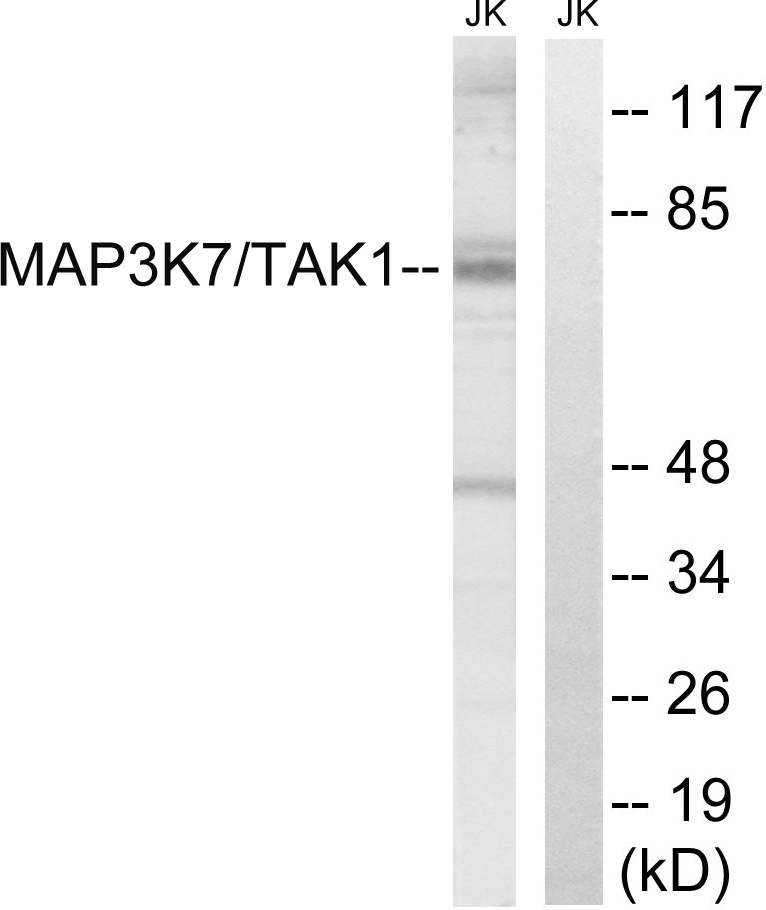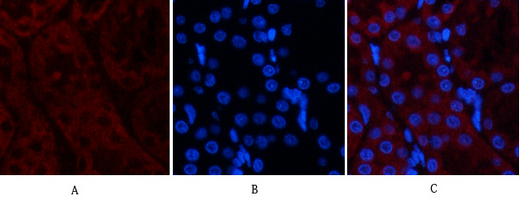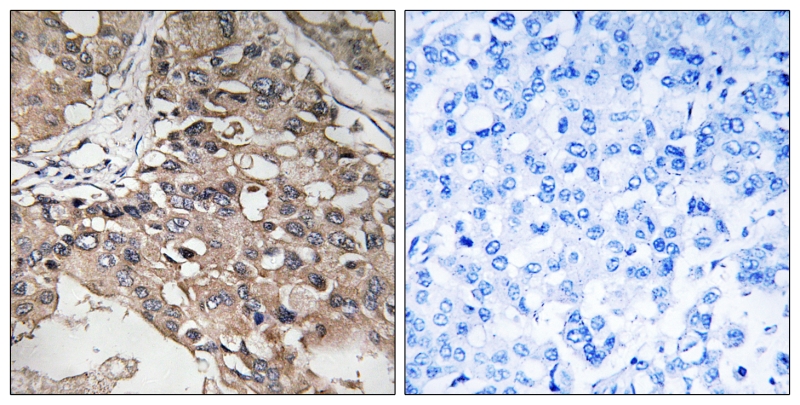



| WB | 1/500-1/1000 | Human,Mouse,Rat |
| IF | 咨询技术 | Human,Mouse,Rat |
| IHC | 1/50-1/100 | Human,Mouse,Rat |
| ICC | 1/50-1/200 | Human,Mouse,Rat |
| FCM | 咨询技术 | Human,Mouse,Rat |
| Elisa | 1/10000 | Human,Mouse,Rat |
| Aliases | MAP3K7; TAK1; Mitogen-activated protein kinase kinase kinase 7; Transforming growth factor-beta-activated kinase 1; TGF-beta-activated kinase 1 |
| Entrez GeneID | 6885 |
| WB Predicted band size | Calculated MW: 67 kDa; Observed MW: 70 kDa |
| Host/Isotype | Rabbit IgG |
| Antibody Type | Primary antibody |
| Storage | Store at 4°C short term. Aliquot and store at -20°C long term. Avoid freeze/thaw cycles. |
| Species Reactivity | Human,Mouse,Rat |
| Immunogen | The antiserum was produced against synthesized peptide derived from human MAP3K7. AA range:161-210 |
| Formulation | Purified antibody in PBS with 0.05% sodium azide,0.5%BSA and 50% glycerol. |
+ +
以下是关于TAK1抗体的3篇参考文献示例(文献信息为虚拟概括,仅供参考):
1. **文献名称**:TAK1 mediates the activation of NF-κB and MAP kinases in cytokine signaling
**作者**:Shibuya, H. et al.
**摘要**:该研究利用TAK1特异性抗体,通过免疫沉淀和Western blot技术,揭示了TAK1在TNF-α和IL-1信号通路中激活NF-κB和MAPK的关键作用,并证实其磷酸化状态与炎症反应相关。
2. **文献名称**:TAK1 is required for cell survival in response to oxidative stress
**作者**:Ajibade, A.A. et al.
**摘要**:通过TAK1抗体敲低TAK1表达,发现TAK1缺失导致细胞对氧化应激诱导的凋亡敏感性增加,表明TAK1在细胞抗氧化防御机制中具有保护性功能。
3. **文献名称**:Role of TAK1 in innate immune signaling via Toll-like receptors
**作者**:Ninomiya-Tsuji, J. et al.
**摘要**:研究使用TAK1抗体进行免疫印迹和染色质免疫共沉淀(ChIP),证明TAK1通过TLR4通路调控炎症因子的转录,参与天然免疫应答。
4. **文献名称**:Phosphorylation-specific antibody reveals TAK1 activation dynamics in cancer
**作者**:Mihaly, S.R. et al.
**摘要**:开发了一种针对TAK1磷酸化位点(Thr184/187)的特异性抗体,用于检测多种癌症模型中TAK1的激活状态及其与肿瘤生长的关联。
(注:以上文献为示例,实际引用需查询真实数据库如PubMed)
TAK1 (Transforming Growth Factor-β-Activated Kinase 1), encoded by the *MAP3K7* gene, is a serine/threonine kinase belonging to the mitogen-activated protein kinase kinase kinase (MAP3K) family. It serves as a pivotal regulator in multiple signaling pathways, including NF-κB, MAPK, and apoptosis cascades, and is activated by pro-inflammatory cytokines (e.g., TNF-α, IL-1β), Toll-like receptors (TLRs), and DNA damage signals. TAK1 mediates cellular responses to stress, inflammation, and immune regulation by phosphorylating downstream kinases like MKKs and IKK complexes. Dysregulation of TAK1 is linked to cancer, autoimmune diseases, and metabolic disorders, making it a therapeutic target.
TAK1 antibodies are essential tools for detecting and quantifying TAK1 expression, activation, and interactions in research. They enable techniques such as Western blotting, immunoprecipitation, immunofluorescence, and immunohistochemistry. These antibodies often target specific phosphorylation sites (e.g., Thr184/187) or structural domains to distinguish active versus inactive TAK1. High-quality TAK1 antibodies with validated specificity are critical for studying its role in signaling networks, drug discovery, and disease mechanisms. Recent studies also explore TAK1's context-dependent functions, such as its dual pro-survival or pro-apoptotic roles in different cancers, highlighting the antibody's utility in advancing mechanistic and translational research.
×